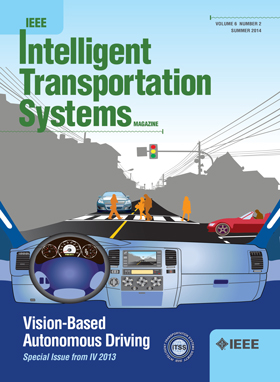Parallel Heterogeneous Networks With Adaptive Routing for Online Video Lane Detection
IF 7.9
1区 工程技术
Q1 ENGINEERING, CIVIL
IEEE Transactions on Intelligent Transportation Systems
Pub Date : 2025-03-04
DOI:10.1109/TITS.2025.3545621
引用次数: 0
Abstract
Lane detection plays a critical role in the field of autonomous driving. Most previous lane detection methods focus exclusively on analyzing individual images and overlook the inter-frame dynamics, while car-mounted cameras capture continuous streams amenable to leveraging intra-video context. In challenging scenes with blur, occlusion, or illumination variations, considering visible lanes from previous frames can aid current frame interpretation. To tackle above challenges, we introduce a parallel heterogeneous framework, called PHNet, for video lane detection. First, a novel router automatically analyzes multi-level features to determine the inference route of candidates with different visual cues. Then, a cross-frame attention mechanism leverages relationships between current candidates and positive embeddings from past frame to aggregate contextual cues. Unlike existing offline video lane detection methods, which face limitations in handling long video sequences and real-time video streams due to computational constraints, our proposed method operates as an online framework capable of processing clips of any length. Our method demonstrates robust lane detection through temporally association modeling and efficient online inference. The extensive experiments on public benchmark show that PHNet has superior performance versus state-of-the-art video lane detection methods.求助全文
约1分钟内获得全文
求助全文
来源期刊

IEEE Transactions on Intelligent Transportation Systems
工程技术-工程:电子与电气
CiteScore
14.80
自引率
12.90%
发文量
1872
审稿时长
7.5 months
期刊介绍:
The theoretical, experimental and operational aspects of electrical and electronics engineering and information technologies as applied to Intelligent Transportation Systems (ITS). Intelligent Transportation Systems are defined as those systems utilizing synergistic technologies and systems engineering concepts to develop and improve transportation systems of all kinds. The scope of this interdisciplinary activity includes the promotion, consolidation and coordination of ITS technical activities among IEEE entities, and providing a focus for cooperative activities, both internally and externally.
 求助内容:
求助内容: 应助结果提醒方式:
应助结果提醒方式:


